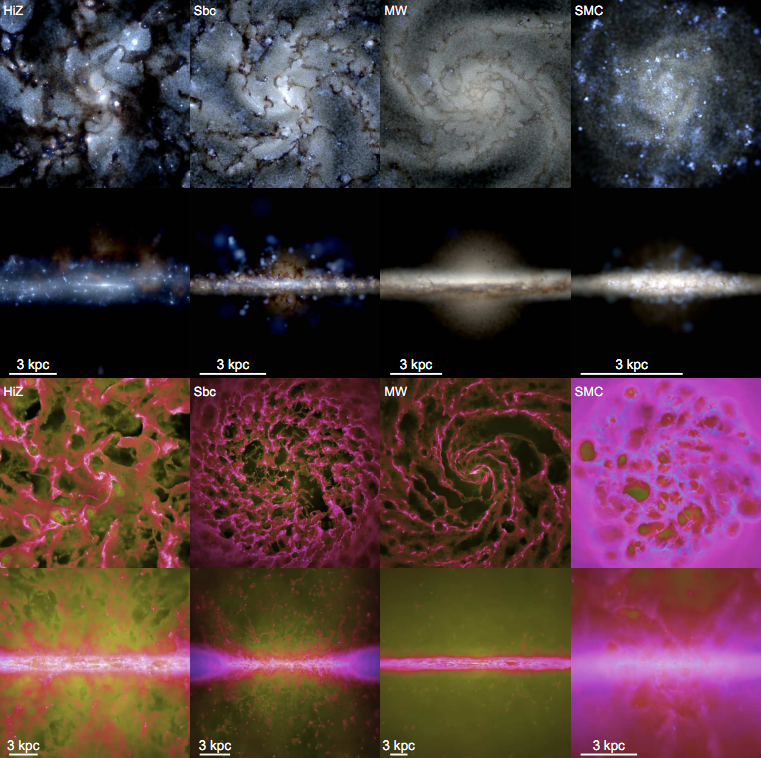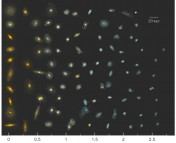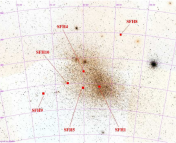Title: The Mass Inflow and Outflow Rates of the Milky Way
Authors: Andrew J. Fox, Philipp Richter, Trisha Ashley, Timothy M. Heckman, Nicolas Lehner, Jessica K. Werk, Rongmon Bordoloi, Molly S. Peeples
First Author’s Institution: AURA for ESA, Space Telescope Science Institute
Status: Accepted to ApJ
Galaxies are so large that it can be hard to imagine them changing over time. However, we believe that galaxies are living and breathing entities, accreting and ejecting mass all throughout their lives. The Milky Way is no exception. Characterizing the rates of mass flow and the mass loading factor for galaxies, though, is crucial to understanding the details of this ‘galactic fountain’ model. In today’s paper, the authors provide new estimates of these rates for the Milky Way. They also present the first estimate of the mass loading factor (the ratio of material flowing out of the galaxy to the star formation rate) for the outflowing material from the entire Milky Way disk. Essentially, this measures how efficiently the Milky Way recycles the gas it takes from its surroundings. These are very cool results, so let’s break down exactly what they mean.
Why is mass flowing in and out of a galaxy?
A galaxy primarily exchanges low-density gas with its surroundings. Over time, some of this gas surrounding the galaxy will begin to clump together, and gravity will cause these clumps to fall back into the galaxy. This allows a galaxy to sustain its star-formation rate for a long period of time. Once these stars form, the most massive ones will start undergoing significant mass loss and exerting strong radiation pressure on the ambient medium. They will then end their lives as supernovae: brilliant explosions that inject more energy and momentum into their surroundings. These processes are collectively known as ‘stellar feedback’, and they are responsible for pushing gas back out of the Milky Way. In other words, the Milky Way is not an isolated lake of material; it is a reservoir that is constantly gaining and losing gas due to gravity and stellar feedback
That sounds complicated. How do the authors figure out which gas is going in and out?
Great question! Unfortunately, none of the gas travels with a bumper sticker that says ‘Milky Way Bound’. This means that the authors need to figure out which gas is likely to escape the Milky Way and which is likely to fall back in. They do this by identifying high-velocity clouds (HVCs) of gas that are traveling faster than the disk of the Milky Way is rotating, meaning that they must represent inflowing or outflowing gas. Once they have identified a HVC, they check whether the cloud is moving towards the galactic disk or away from it. Finally, they ignore HVCs that are known to reside in structures (such as the Fermi Bubbles) that don’t trace the inflowing or outflowing gas. The final sample of HVCs is shown in Figure 1.
What were their results?
The authors estimate the inflow rate to be 0.53 +/- 0.31 solar masses per year and the outflow rate to be 0.16 +/- 0.10 solar masses per year. This means that the Milky Way currently appears to have a net inflow of gas. HVCs only have lifetimes on the order of 100 million years, so it is important to note that this result should not be extended to very long timescales. Furthermore, this outflow rate is a lower limit and the true outflow rate could be higher if other regions like the Fermi Bubbles are included. Nevertheless, this exciting result provides evidence that the Milky Way disk may currently be gaining mass.
The paper also presents an estimate for the mass loading factor of roughly 0.1 using an independent measurement of the Milky Way’s star formation rate. This means that roughly 10% of the mass that forms stars is ejected back out of the galaxy. This result, together with the measurements of the inflow and outflow rates, can all help astronomers get closer to building a realistic model of the Milky Way.





Trackbacks/Pingbacks